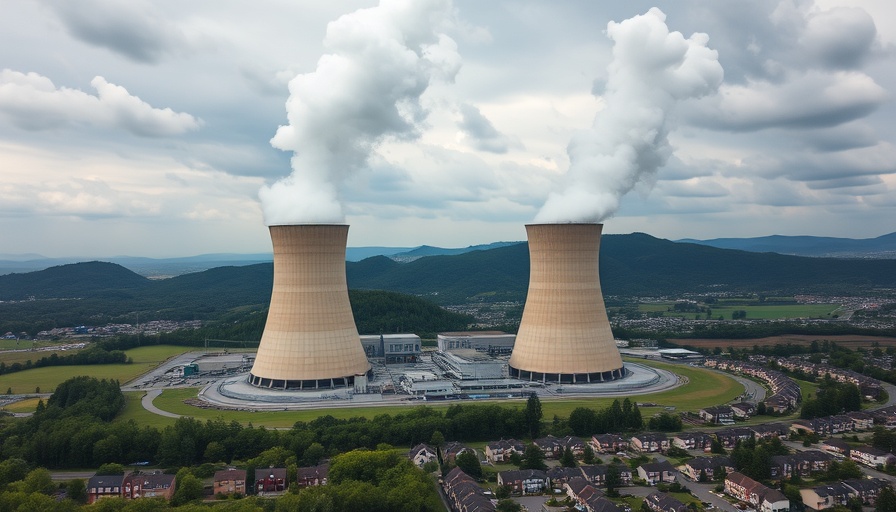
Unpacking Trump's Nuclear Energy Push
On May 27, 2025, President Donald Trump signed a series of executive orders aimed at revitalizing nuclear energy in the United States—a bold move aimed at securing a future defined by energy independence and technological supremacy. The executive orders are framed around the need for additional electrical capacity for emerging industries, especially artificial intelligence (AI) data centers, a sector expected to surge in demand.
Regulatory Changes Redefining the Landscape
The newly signed orders aim to demolish regulatory bottlenecks specifically targeting the Nuclear Regulatory Commission (NRC). By mandating that the NRC work efficiently to issue licenses, Trump’s administration seeks swift progress in constructing new reactors on federal lands and enabling reactor design testing at the Department of Energy labs. Michael Kratsios, the director of Science and Technology, voiced a sentiment of urgency: “Over the last 30 years, we stopped building nuclear reactors in America – that ends now.”
Implications for Energy and Safety
While nuclear energy is recognized for its low carbon footprint compared to fossil fuels, several underlying concerns lurk in the shadows. Environmental activists continue to voice their worries regarding radioactive waste that remains unmanageable, potentially jeopardizing both public safety and environmental health. The Guardian highlighted the compelling paradox that, even as the government seeks to advance nuclear technology, the regulatory body that would ensure safety may be hampered by staff shortages due to past federal workforce reductions.
Cultural Perspectives on Nuclear Energy
Nuclear energy's history in the United States has been marred with skepticism and incidents that have left lasting impressions—Chernobyl and Fukushima, to name a couple. The sentiment surrounding nuclear energy can pivot from potential innovation to fear-striking memories. In light of Trump’s current advocacy for nuclear power, there’s a societal imperative for open dialogue regarding safety protocols in these newly proposed reactors.
Future Predictions: The Growth of Nuclear Power
With an ambitious target to increase nuclear capacity from 100 to 400 gigawatts by 2050, advocates see this as a golden opportunity for not only energy independence but also as a pivotal moment in climate change initiatives. States such as Pennsylvania, home to the Limerick Generating Station, will need to navigate these new policies while balancing local concerns about nuclear reactor safety.
Decisions for Homebuyers and Investors
For homebuyers and property investors in areas like Dumfries, understanding the implications of these nuclear policies can play a vital role in decision-making. Nuclear energy could introduce new economic opportunities—potentially enhancing property values due to increased energy stability, but it also necessitates a watchful approach on safety regulations and potential environmental risks stemming from nuclear projects.
Taking Action: Engaging with Local Policies
As stakeholders in our communities, it’s imperative for property investors and homeowners to engage with local policymakers about the potential changes relaxing regulations in this sector. Constituents should advocate for comprehensive safety studies and transparency as nuclear projects unfold. Understanding how these changes may affect our homes and neighborhoods empowers us to make well-informed decisions.
In summary, while the push for nuclear energy revival by Trump's administration presents exciting opportunities for American energy independence and economic growth, it simultaneously raises complex questions surrounding safety, environmental responsibility, and community engagement. Embrace the opportunity to be proactive in discussions that shape our local environments.
 Add Row
Add Row  Add
Add 





 Add Row
Add Row  Add
Add 








Write A Comment